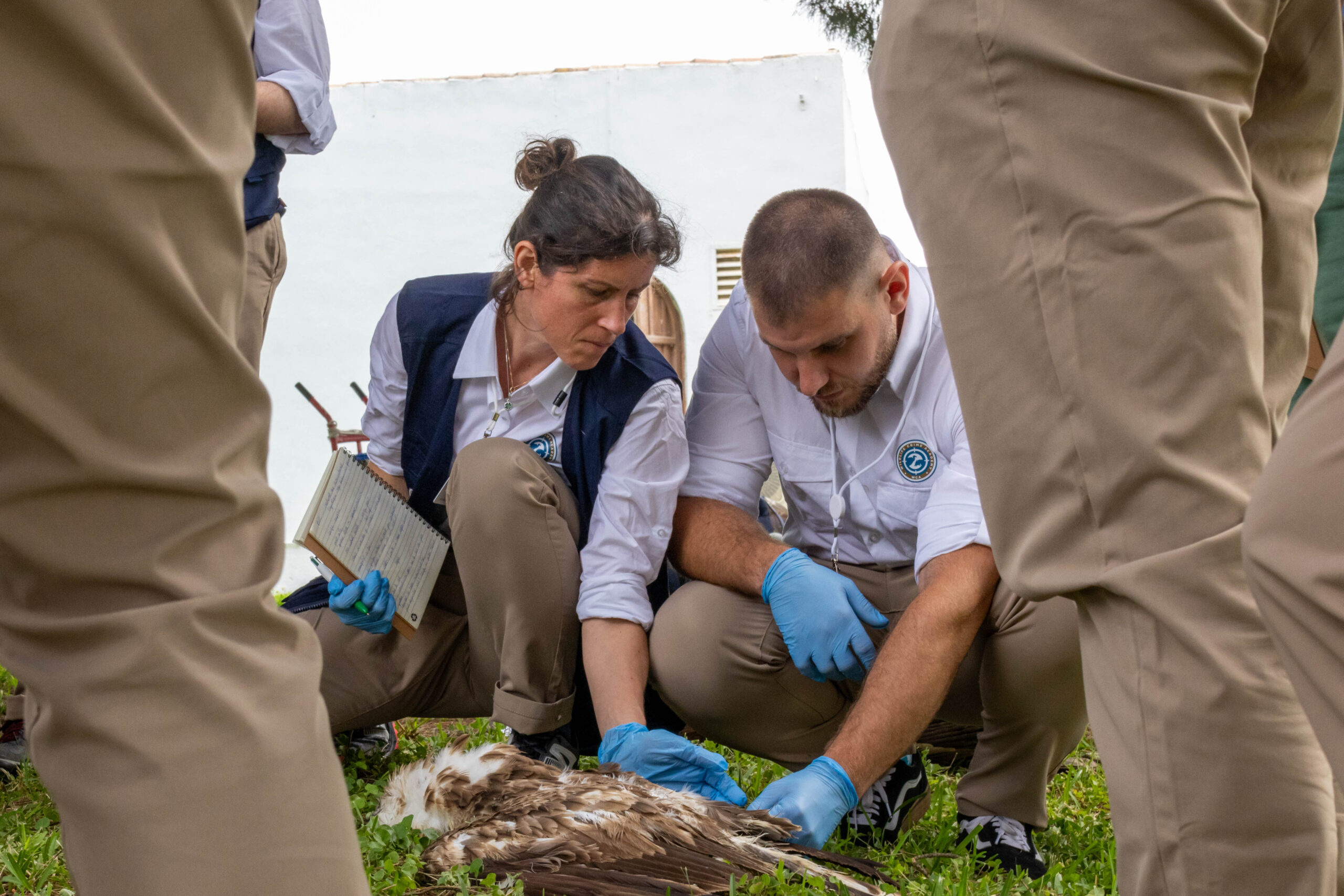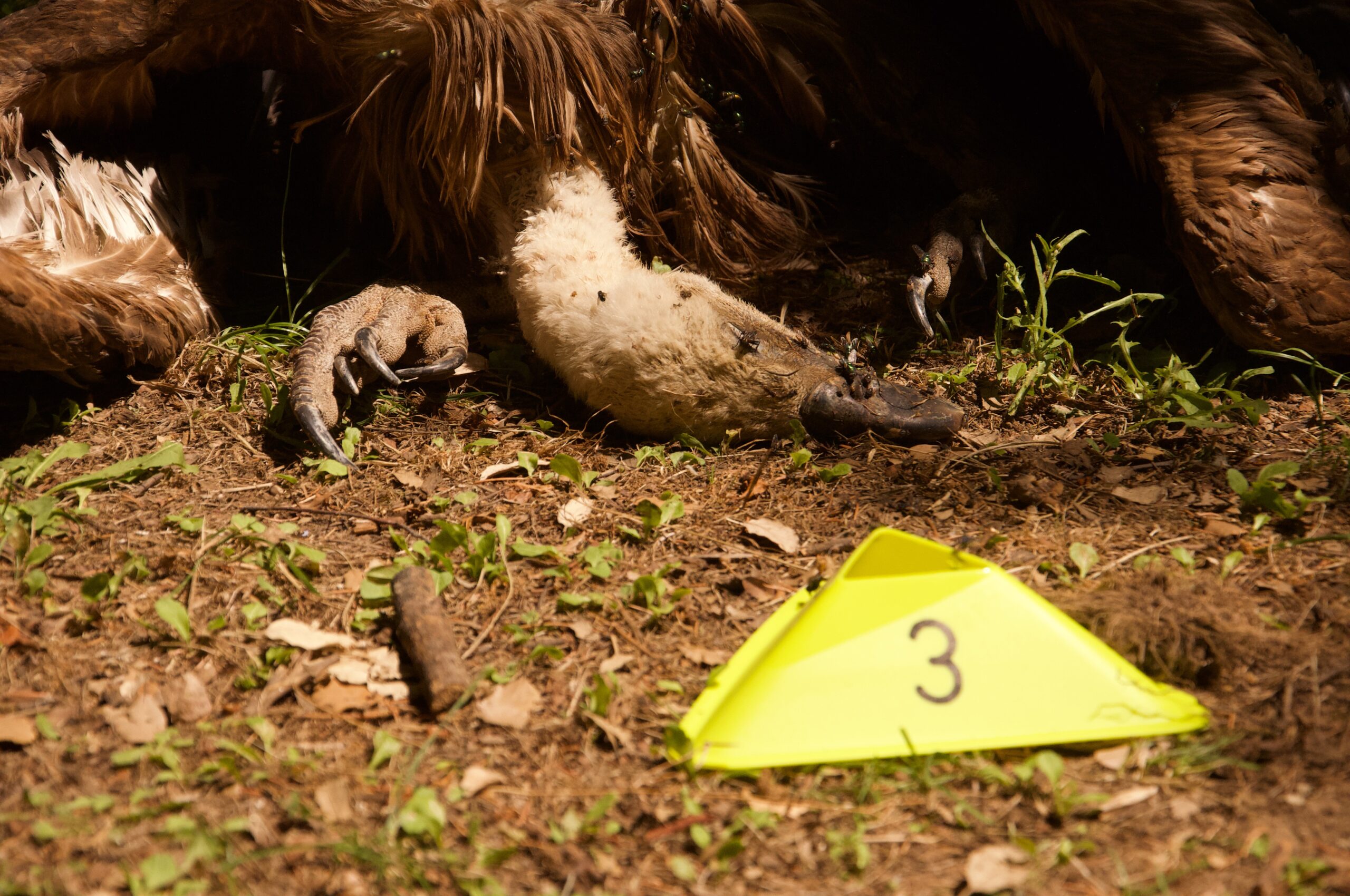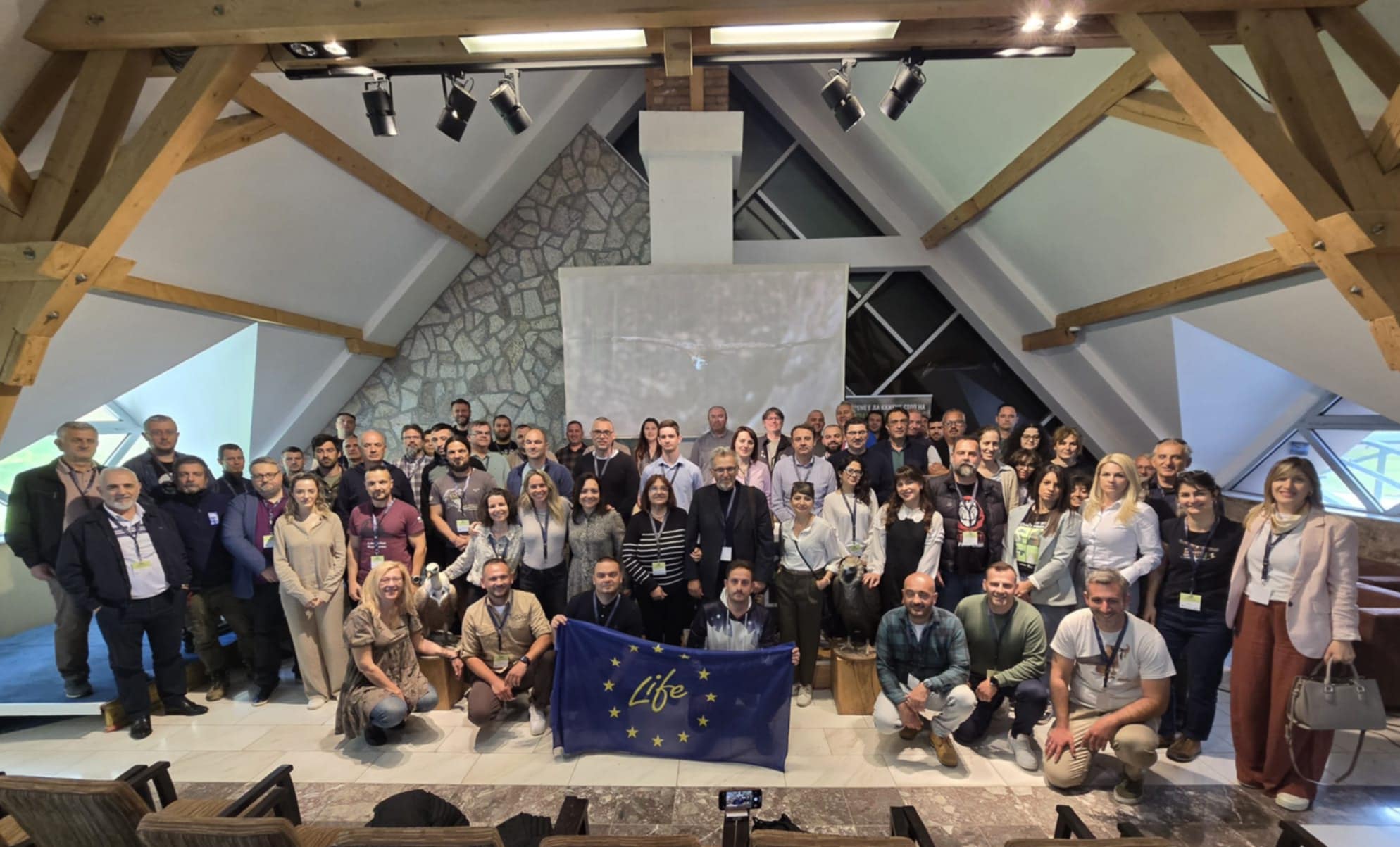
Wolf attacks on hunting dogs recorded in the Evros region in recent years resemble a serious conservation issue for the protection of wildlife. The killing of hunting dogs by wolves triggers negative reactions, affecting many other protected species, including endangered vultures. WWF Greece and Callisto wildlife society, in collaboration with the Management Body of the Dadia-Lefkimi-Soufli Forest National Park and with the contribution of the hunting clubs of the Evros area investigated this phenomenon, with support from the Balkan Anti-Poisoning Project Small Grants Programme, an initiative led by us at the Vulture Conservation Foundation (VCF) and funded by the MAVA Foundation. The main results of the research are published in the scientific journal Animals- MDPI (Open access), and the original publication is freely available here or here.
Methods
In order to investigate this phenomenon, the research team carried out an on-site investigation inside and outside the National Park in a total area of 2000 square kilometres. The investigation was based on live interviews with 56 hunters who had experienced a relevant incident, on a trend-analysis of the phenomenon for the period 2010–2020 and on the application of statistical models to investigate the factors related to the intensity of the phenomenon, from which a corresponding risk map emerged, while we also conducted trophic-analysis of wolf scats collected in the field. During this research, the number of wolf packs and their density were also estimated using multiple field surveying methods.
Results
According to the results, average losses were on average about one dog per decade and per hunter, showing an increasing trend, while wolf attacks on livestock showed a negative and significant trend for the same reference period (2010-2020). However, when the investigation of trends took into account the use of dog GPS collars that facilitate the detection of dogs, it was found that the upward trend was milder. Summer wolf density in the study area was estimated in 2019, at 3.3 individuals per 100 square kilometres. The wolves in the study area feed mainly on wild ungulates (roe deer and wild boar), while dogs accounted for 5.1% of their winter diet.
Areas with low altitude, low to moderate densities of livestock and habitats that favour the presence of species that are both prey for wolves and hunters were the riskiest. Dogs were more vulnerable when hunting hares and attacks were more common during the wolves’ weaning season or in wolf territories with confirmed reproduction. Hunter experience and group hunting reduced losses per hunter, while wolves avoided larger breeds or older hunting dogs. At the same time, producing noise, early reacting during an attack and keeping the dogs close to the hunter were factors that reduce the severity of the attack.
Wild boar attacks on hunting dogs were 7 times more common than wolf attacks for the wild boar hunters. A large percentage of hunters also reported attacks on their dogs by shepherd dogs. An appropriate case-by-case assessment system should be implemented, including veterinary autopsies to confirm and effectively separate wolf attacks from wild boar attacks and in the context of an insurance system for hunting dogs.

To mitigate conflicts, a number of preventive measures are proposed, such as cooperative hunting in larger groups, the intensification of hunting dog movement control by using GPS collars, the use of risk maps to warn hunters and the extensive use of special protective vests to reduce injuries and mortality of dogs from both wolves and wild boars. The use of larger breeds of dogs that appear less vulnerable may also be considered. Younger dogs should be trained with older dogs, first in safer areas, where possible, to gain experience. Dogs can also preferably be trained from an early age in the use of protective vests to reduce intolerance. Using noise devices before hunting can also prove effective in dangerous areas.
As the phenomenon also seems to be related to the overall reduction of food availability for wolves due to the collapse of extensive livestock grazing in the area, the red deer reintroduction in the Dadia National Park planned by the Management Body may also alleviate the phenomenon, as it is expected to increase overall wolf prey biomass. These methods can be applied in combination to reduce dog deaths and injuries by both wolves and wild boars.
The proposed procedures and methods may reduce conflicts as well as motivation for the illegal use of poisoned baits due to human-wildlife conflict. Poisoned baits are harmful to both endangered vulture species as well as to hunters and livestock-breeders whose dogs may be poisoned.










